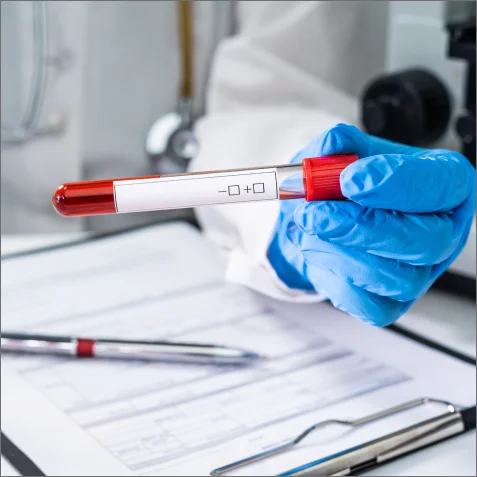Sexually transmitted diseases (STDs) are infections that spread from person to person through sexual contact. They pose a significant public health concern globally, with millions of new cases reported each year. STDs can have serious health consequences if left untreated, including infertility, chronic pain, and increased risk of HIV transmission. Therefore, understanding the onset of STD symptoms is crucial for timely diagnosis and treatment, ultimately reducing the burden of disease.
Book a Consultation With STD Test in Dubai
Importance of Early Detection
Recognizing the onset of STD symptoms is essential for early detection and intervention. Early diagnosis allows for prompt treatment, which can help prevent complications, reduce transmission rates, and improve health outcomes. Additionally, understanding the variability in symptom onset for different STDs can inform healthcare providers and individuals about when to seek testing and medical care. By promoting awareness and education about STD symptoms and their implications, we can empower individuals to take proactive steps to protect their sexual health.
Onset of STD Symptoms
Explanation of the variability in symptom onset for different STDs.
The onset of symptoms for STDs can vary widely depending on the type of infection, individual factors, and the specific stage of the disease. Some STDs may cause symptoms to appear within days or weeks of exposure, while others may remain asymptomatic for an extended period. Understanding this variability is essential for accurately diagnosing and managing STDs.
Factors influencing the time frame for symptom manifestation, including the type of infection, individual immune response, and other variables.
Several factors influence the timing of symptom onset for STDs. The type of infection plays a significant role, as different pathogens have distinct incubation periods and disease progression patterns. Additionally, individual immune responses can affect the severity and duration of symptoms, with some individuals experiencing more pronounced reactions than others. Other variables, such as concurrent health conditions and treatment history, may also influence symptom presentation.
Common STDs and Their Symptom Onset
Chlamydia and gonorrhea: Discussion of the typical time frame for symptom appearance, which may range from days to weeks after exposure.
Chlamydia and gonorrhea are bacterial infections commonly transmitted through sexual contact. In many cases, these infections initially present with mild or nonspecific symptoms or may even be asymptomatic. However, symptoms such as genital discharge, pain or burning during urination, and discomfort in the genital area may manifest within days to weeks after exposure. Early detection through testing is crucial for effective treatment and prevention of complications.
Syphilis: Exploring the stages of syphilis and the timeline for symptoms, which can vary from weeks to years.
Syphilis is a bacterial infection caused by the bacterium Treponema pallidum. It progresses through several stages, each characterized by distinct symptoms and timelines. The primary stage typically begins with the appearance of painless sores or ulcers, known as chancres, at the site of infection. These sores may go unnoticed and heal on their own, but without treatment, syphilis can progress to more severe stages, leading to complications such as organ damage and neurological problems.
Genital herpes: Overview of the initial outbreak and recurrent episodes, with symptoms often appearing within a few days to weeks after exposure.
Genital herpes is caused by the herpes simplex virus (HSV) and is characterized by painful blisters or ulcers on the genital area. The initial outbreak usually occurs within a few days to weeks after exposure and may be accompanied by flu-like symptoms such as fever and swollen lymph nodes. While the first episode tends to be the most severe, recurrent episodes may occur periodically throughout a person’s life. Early diagnosis and antiviral treatment can help manage symptoms and reduce the frequency of outbreaks.
HPV (human papillomavirus): Understanding the latency period for HPV-related symptoms, such as genital warts or abnormal cell changes, which can range from weeks to years.
HPV infections are common and often asymptomatic, with many individuals unaware they are infected. However, certain strains of HPV can cause genital warts or abnormal cell changes that may lead to cervical, anal, or other cancers. The time frame for symptom onset varies depending on factors such as HPV strain, individual immune response, and concurrent infections. Genital warts may appear within weeks to months after exposure, while abnormal cell changes may develop over years. Regular screening and vaccination against high-risk HPV strains can help prevent associated cancers and complications.
Factors Influencing Symptom Onset
Individual immune response: How variations in immune function can affect the timing and severity of STD symptoms.
The immune system plays a critical role in the body’s response to pathogens, including those responsible for STDs. Individual differences in immune function can influence the timing, severity, and duration of symptoms. Some individuals may mount a robust immune response, leading to rapid symptom onset and resolution, while others may experience prolonged or more severe symptoms due to immune deficiencies or other factors. Understanding these variations in immune response can help healthcare providers tailor treatment approaches and manage STDs effectively.
Coinfections and comorbidities: Discussion of how preexisting health conditions or concurrent infections may influence the onset of STD symptoms.
Coinfections and comorbidities can complicate the presentation of STD symptoms and affect disease progression. Individuals with preexisting health conditions or weakened immune systems may be more susceptible to STDs and experience more severe or prolonged symptoms. Concurrent infections with other pathogens can also influence the onset and severity of STD symptoms. Healthcare providers must consider these factors when assessing and managing patients with STDs to ensure timely diagnosis and appropriate treatment.
Treatment history: Exploring how previous STD treatments or antibiotic use may impact symptom presentation and detection.
Previous STD treatments or antibiotic use can influence the onset and presentation of symptoms in individuals
Read More: What are the First Stages of STD?

